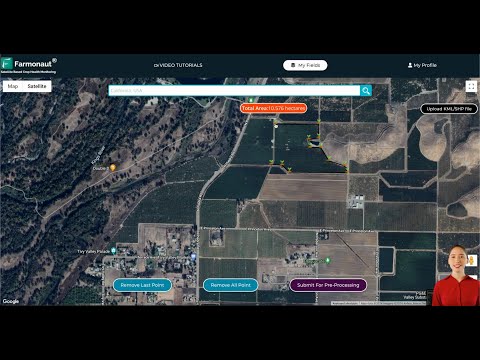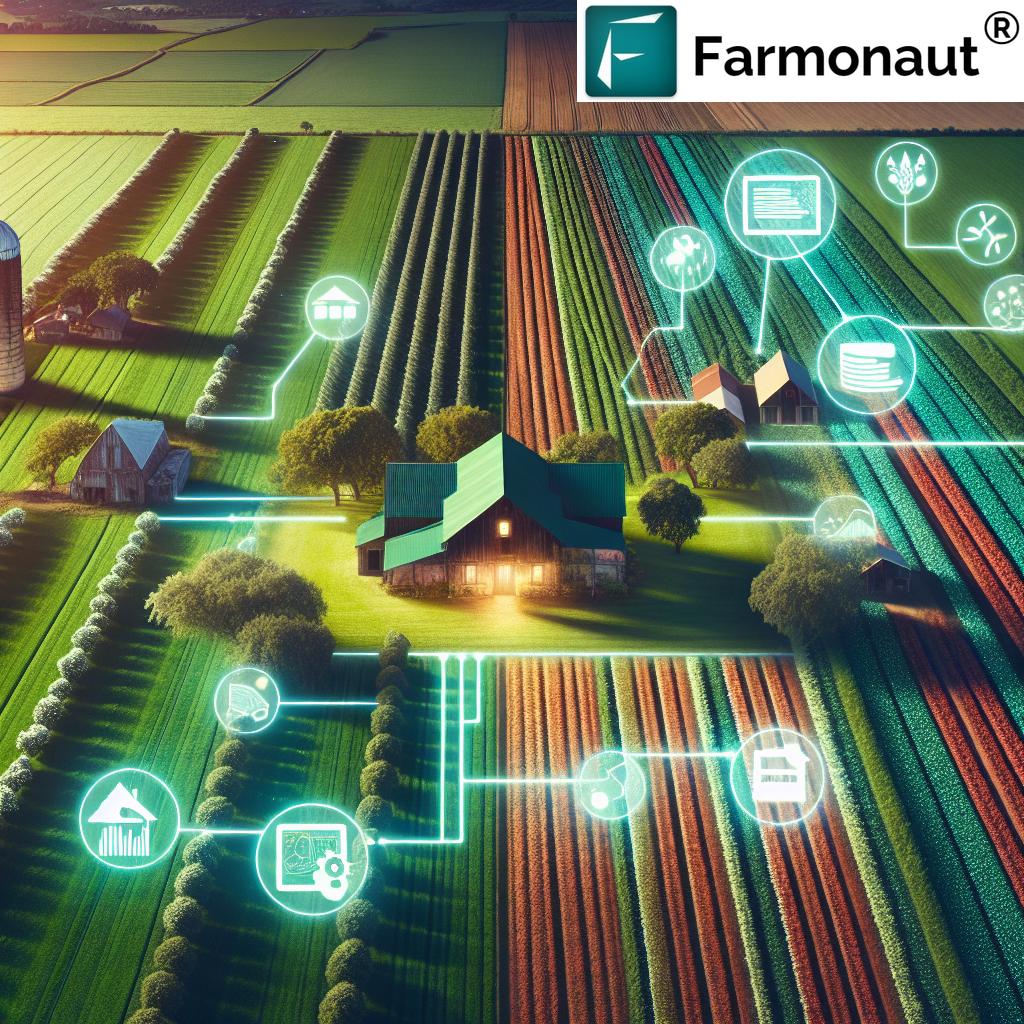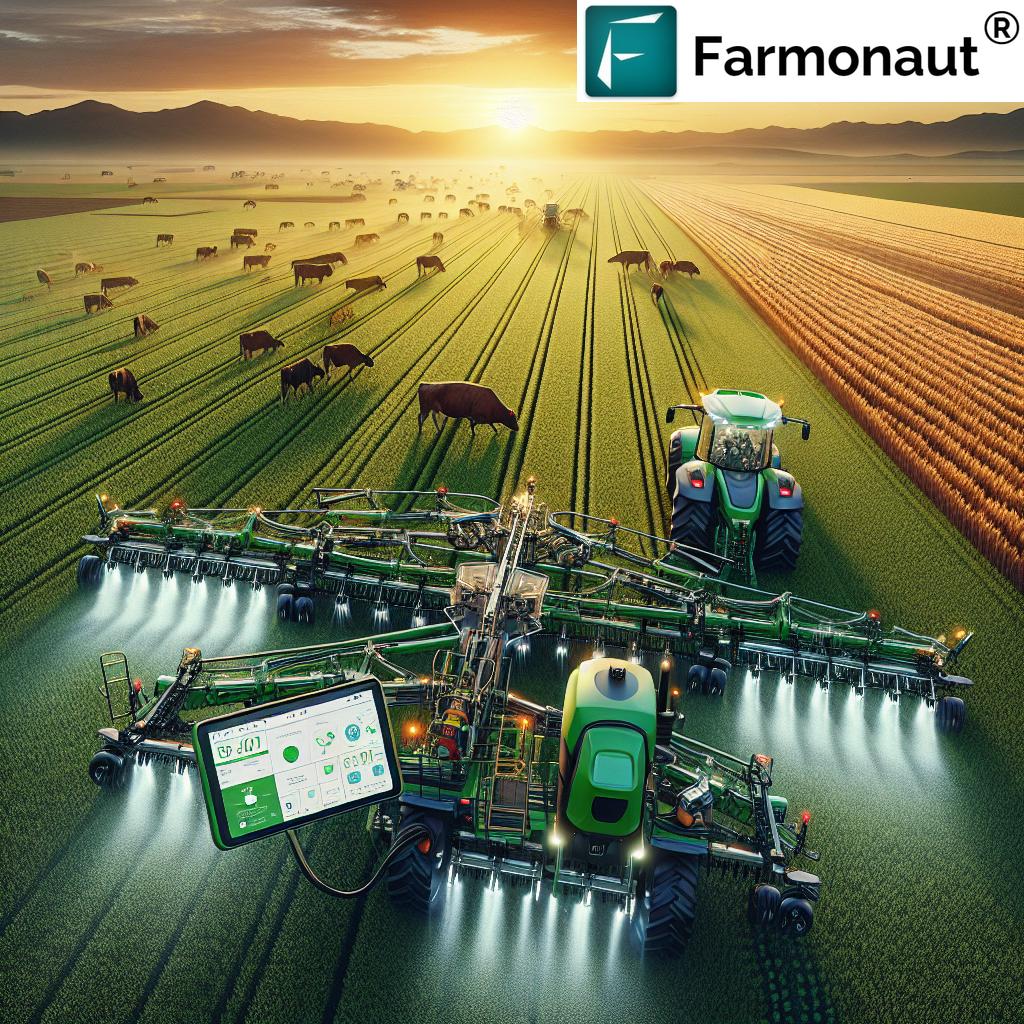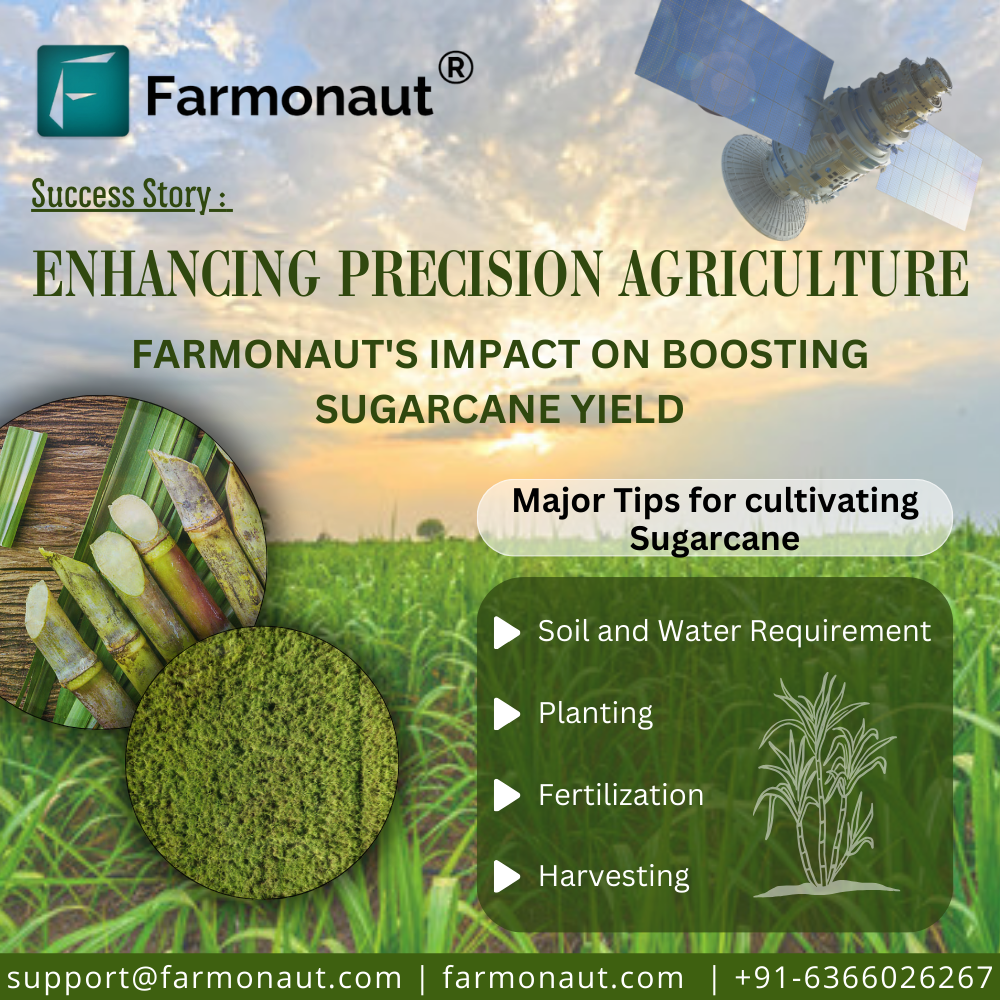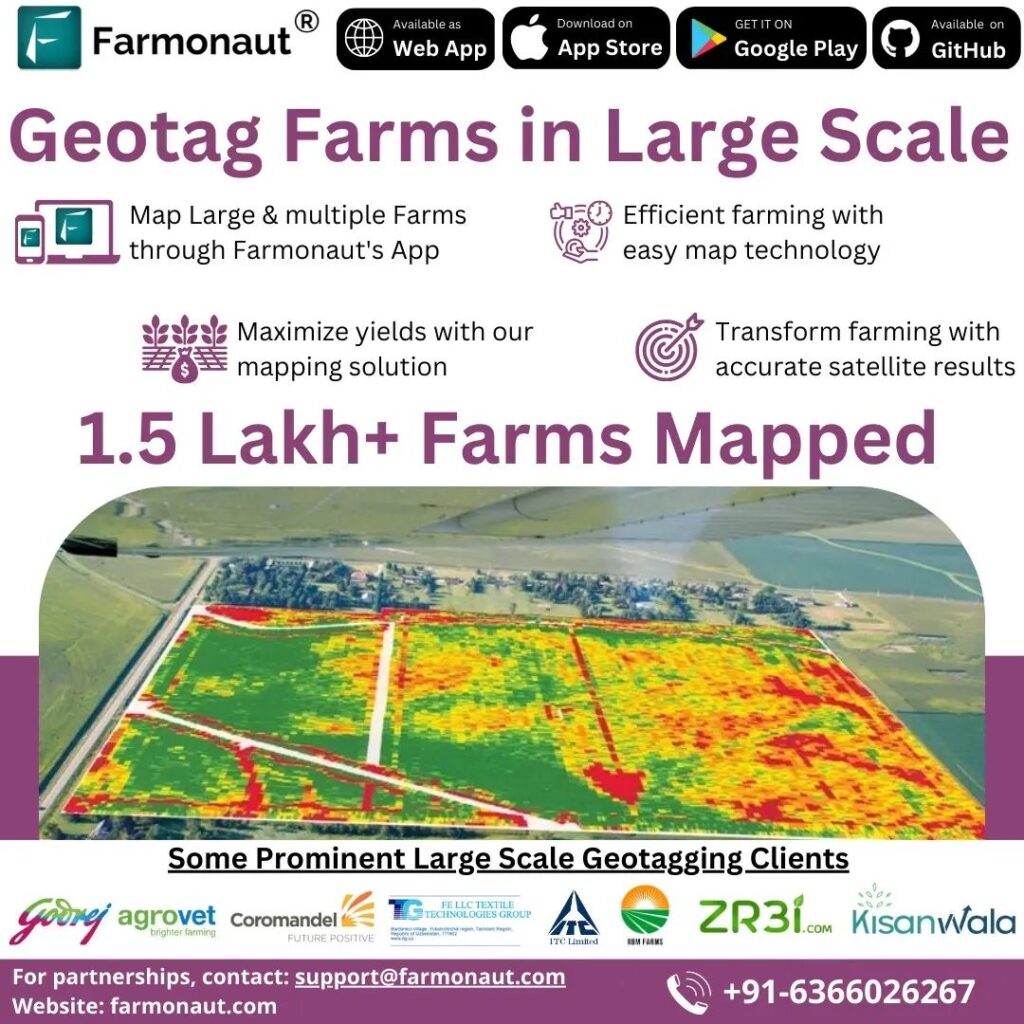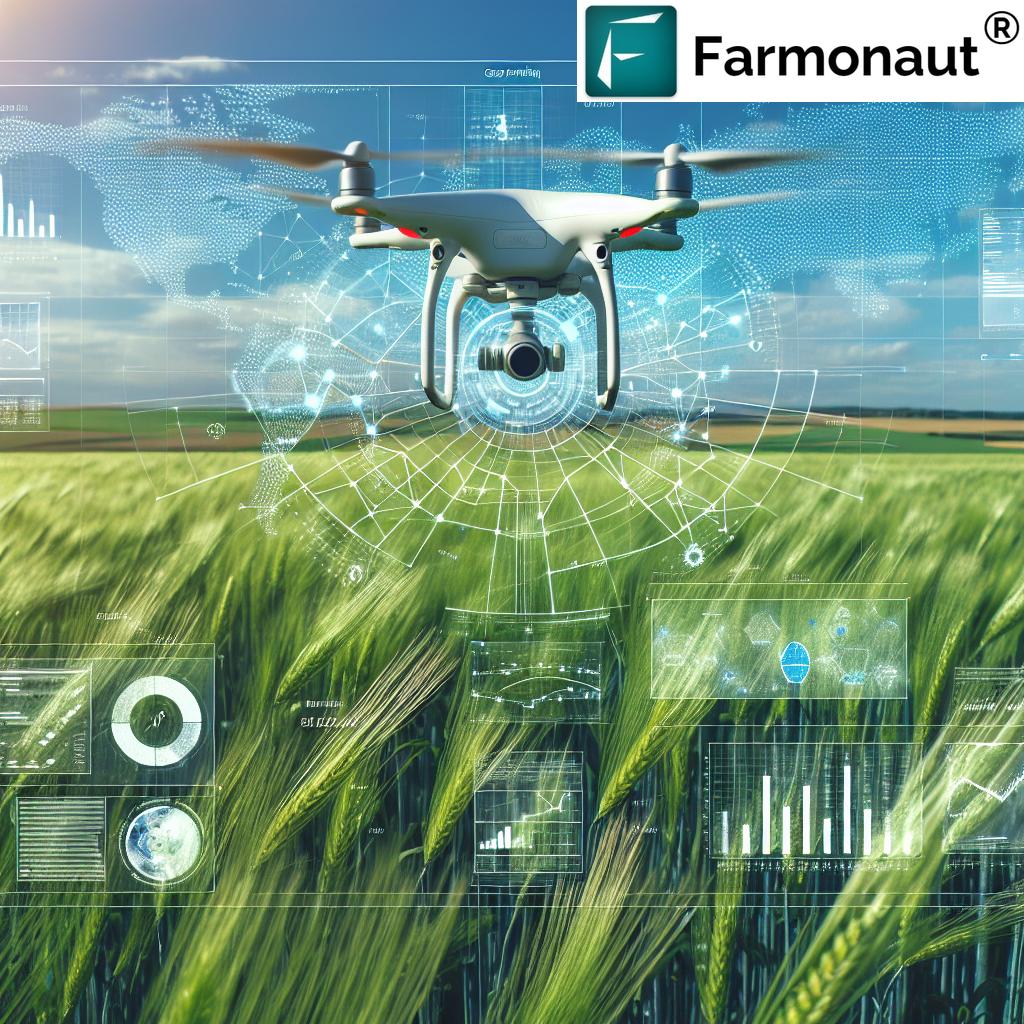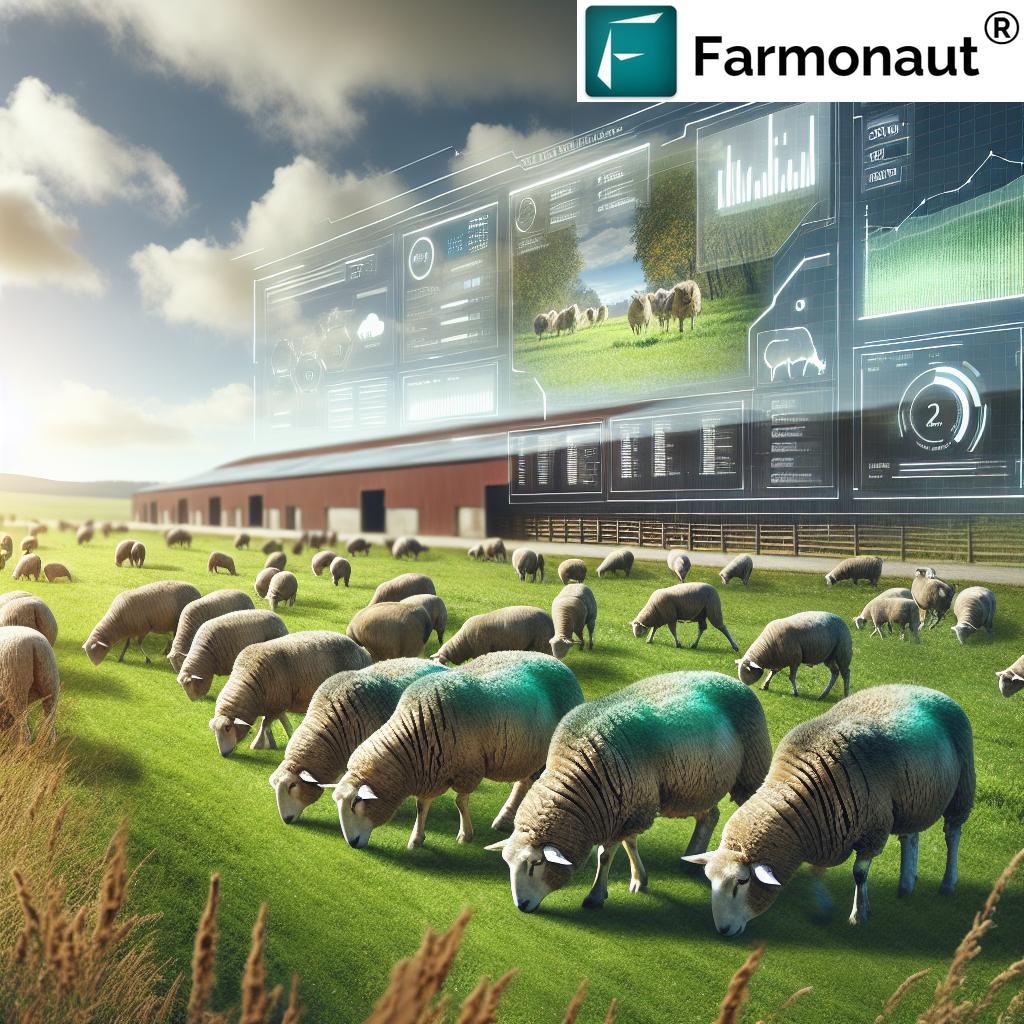Maximize Your Harvest: 10 Essential Planning Tips for Precision Agriculture Success

“Precision agriculture can increase crop yields by up to 30% while reducing water usage by 50%.”
As we approach the crucial harvest season, it’s time for us to dive deep into the world of precision agriculture technology and smart farming techniques. In this comprehensive guide, we’ll explore ten essential harvest planning strategies that can help farmers optimize their field performance and maximize profitability. From leveraging digital farming solutions to enhancing decision-making processes, we’ll cover everything you need to know to ensure a successful harvest.
At Farmonaut, we understand the importance of data-driven farming decisions. That’s why we’ve developed cutting-edge tools to support farmers in their quest for agricultural excellence. Our satellite-based farm management solutions, accessible via Android, iOS, and web applications, are designed to make precision agriculture affordable and accessible to farmers worldwide.
Let’s get started with our top 10 tips for precision agriculture success during harvest season!
1. Embrace Data Management for Informed Decision-Making
In the realm of precision agriculture, data is king. Effective harvest planning for farmers begins with robust farm data management. Here’s how you can make the most of your agricultural data:
- Update your farm management apps: Ensure all your digital farming solutions are up-to-date and synced with the latest field data.
- Review historical yield data: Analyze past performance to identify trends and areas for improvement.
- Integrate weather forecasts: Incorporate real-time weather data into your planning to optimize harvest timing.
By leveraging tools like Farmonaut’s satellite-based crop monitoring system, you can access real-time insights into your fields’ performance. Our platform provides valuable data on vegetation health (NDVI), soil moisture levels, and other critical metrics, empowering you to make informed decisions about irrigation, fertilizer usage, and pest management.
2. Calibrate Your Equipment for Optimal Performance
Proper equipment calibration is crucial for accurate data collection and efficient harvesting. Follow these steps to ensure your machinery is ready for action:
- Check and calibrate yield monitors: Ensure accurate crop yield analysis by properly calibrating your yield monitoring equipment.
- Verify GPS accuracy: Confirm that your GPS systems are functioning correctly for precise field mapping and variable rate applications.
- Test and adjust harvesting equipment: Conduct thorough inspections and make necessary adjustments to your combines, headers, and other harvesting machinery.
Remember, well-calibrated equipment not only improves the accuracy of your data but also enhances overall harvesting efficiency, reducing waste and maximizing your crop yield.
3. Conduct In-Depth Field Performance Analysis
To make the most of your harvest, it’s essential to analyze your fields’ performance thoroughly. Utilize agronomic data collection tools to gather insights that will inform your future planting and crop protection strategies. Here’s how:
- Create detailed field maps: Use satellite imagery and GPS data to generate comprehensive maps of your fields, highlighting variations in soil types, topography, and crop health.
- Identify high and low-performing areas: Analyze NDVI (Normalized Difference Vegetation Index) data to pinpoint areas of your fields that may require special attention during harvest.
- Compare performance across seasons: Use historical data to track changes in field performance over time, helping you identify long-term trends and make informed decisions for future seasons.
Farmonaut’s advanced visualization techniques can help you interpret this data effectively, providing you with actionable insights to optimize your harvest strategy.

4. Optimize Resource Allocation with Variable Rate Technology
Variable rate technology is a game-changer in precision agriculture, allowing farmers to apply inputs more efficiently based on specific field conditions. Here’s how you can leverage this technology for a successful harvest:
- Create variable rate prescriptions: Use field performance data to develop customized prescriptions for fertilizer, water, and other inputs.
- Implement zone-based management: Divide your fields into management zones based on soil type, topography, and historical yield data to tailor your approach to each area.
- Monitor and adjust in real-time: Use sensors and real-time data to make on-the-go adjustments to your variable rate applications during harvest.
By optimizing resource allocation, you can reduce input costs while maximizing your crop yield and overall profitability.
5. Enhance Crop Health Monitoring for Timely Interventions
Effective crop health monitoring is crucial for identifying and addressing issues before they impact your harvest. Here’s how you can stay on top of your crop’s health:
- Implement regular scouting routines: Use precision agriculture technology to guide your scouting efforts, focusing on areas that show potential signs of stress or disease.
- Leverage satellite imagery: Utilize Farmonaut’s satellite-based crop health monitoring to detect early signs of pest infestations, nutrient deficiencies, or other issues that may affect your harvest.
- Integrate IoT sensors: Deploy Internet of Things (IoT) sensors throughout your fields to collect real-time data on soil moisture, temperature, and other crucial parameters.
By staying proactive in your crop health monitoring, you can make timely interventions that protect your yield and ensure a successful harvest.
“Data-driven farming decisions can lead to a 20% reduction in fertilizer use and a 15% increase in overall farm profitability.”
6. Streamline Logistics and Fleet Management
Efficient logistics and fleet management are essential for a smooth harvest operation. Here’s how you can optimize your resources:
- Plan optimal harvest routes: Use GPS technology and field maps to plan the most efficient harvesting routes, minimizing fuel consumption and time spent in the field.
- Coordinate equipment and personnel: Utilize digital farming solutions to coordinate your harvesting equipment and workforce effectively, ensuring seamless operations across your farm.
- Implement real-time tracking: Use Farmonaut’s fleet management tools to track your vehicles and machinery in real-time, optimizing their usage and ensuring safety.
By streamlining your logistics and fleet management, you can reduce operational costs and improve the overall efficiency of your harvest.
7. Leverage Weather Data for Precision Timing
Weather plays a crucial role in determining the success of your harvest. Here’s how you can use weather data to your advantage:
- Integrate weather forecasts: Use Farmonaut’s weather forecasting tools to plan your harvesting schedule around optimal weather conditions.
- Monitor micro-climate variations: Pay attention to micro-climate differences across your fields, which can affect crop maturity and harvesting windows.
- Adjust harvest timing: Use real-time weather data to make last-minute adjustments to your harvesting schedule, ensuring you harvest your crops at peak quality.
By leveraging accurate weather data, you can minimize the risk of weather-related crop damage and maximize the quality of your harvest.
8. Implement Precision Harvesting Techniques
Precision harvesting techniques can significantly improve your yield and reduce waste. Here’s how to implement them:
- Use auto-steering systems: Implement auto-steering technology in your harvesting equipment to ensure precise and consistent harvesting patterns.
- Optimize combine settings: Use data from your yield monitors and crop sensors to fine-tune your combine settings for different crop varieties and field conditions.
- Implement on-the-go yield mapping: Use real-time yield mapping technology to identify variations in crop performance as you harvest, providing valuable insights for future planning.
By adopting these precision harvesting techniques, you can maximize your crop yield and improve the overall quality of your harvest.
9. Enhance Post-Harvest Data Analysis
The work doesn’t stop once the harvest is complete. Post-harvest data analysis is crucial for continuous improvement. Here’s how to make the most of your harvest data:
- Analyze yield maps: Use Farmonaut’s advanced visualization tools to analyze your yield maps, identifying patterns and areas for improvement.
- Compare actual vs. predicted yields: Compare your actual harvest results with pre-harvest predictions to refine your forecasting models for future seasons.
- Evaluate input efficiency: Analyze the relationship between input usage (fertilizers, water, etc.) and yield results to optimize resource allocation for the next growing season.
By conducting thorough post-harvest data analysis, you can gain valuable insights that will inform your decision-making processes for years to come.
10. Plan for Continuous Improvement
The final step in our precision agriculture success strategy is to plan for continuous improvement. Here’s how you can stay ahead of the curve:
- Stay informed about new technologies: Keep up with the latest advancements in precision agriculture technology by attending industry events, webinars, and podcasts.
- Invest in ongoing education: Participate in training programs and workshops to enhance your knowledge of precision farming techniques and data analysis.
- Collaborate with experts: Engage with agricultural scientists, agronomists, and technology providers like Farmonaut to gain insights and stay at the forefront of precision agriculture.
By committing to continuous improvement, you’ll be well-positioned to adapt to changing conditions and maximize your farm’s productivity year after year.
Harvest Planning Checklist
| Planning Step | Key Actions | Technology/Tools |
|---|---|---|
| Data Management |
– Update farm management apps – Review historical yield data – Integrate weather forecasts |
– Farmonaut’s satellite-based crop monitoring system – Farm management software – Weather data integration tools |
| Equipment Calibration |
– Check and calibrate yield monitors – Verify GPS accuracy – Test and adjust harvesting equipment |
– Yield monitor calibration tools – GPS accuracy verification systems – Equipment diagnostic tools |
| Field Performance Analysis |
– Create detailed field maps – Identify high and low-performing areas – Compare performance across seasons |
– Farmonaut’s advanced visualization techniques – NDVI analysis tools – Historical data comparison software |
| Resource Optimization |
– Create variable rate prescriptions – Implement zone-based management – Monitor and adjust in real-time |
– Variable rate application technology – Zone management software – Real-time monitoring sensors |
| Crop Health Monitoring |
– Implement regular scouting routines – Leverage satellite imagery – Integrate IoT sensors |
– Farmonaut’s satellite-based crop health monitoring – Scouting apps and drones – IoT sensor networks |
Conclusion
As we’ve explored in this comprehensive guide, successful harvest planning for farmers in the age of precision agriculture requires a multifaceted approach. By leveraging advanced technologies like Farmonaut’s satellite-based crop monitoring system, farmers can gain valuable insights into their fields’ performance, optimize resource allocation, and make data-driven decisions that lead to increased productivity and profitability.
Remember, the key to maximizing your harvest lies in embracing digital farming solutions, conducting thorough crop yield analysis, and continuously refining your agricultural decision-making tools. By implementing these ten essential planning tips and utilizing smart farming techniques, you’ll be well-equipped to face the challenges of modern agriculture and achieve precision agriculture success.
At Farmonaut, we’re committed to making precision agriculture affordable and accessible to farmers worldwide. Our platform offers a range of tools and services designed to support you throughout the growing season and beyond. From real-time crop health monitoring to AI-based advisory systems, we’re here to help you unlock the full potential of your fields.
Ready to take your farming operations to the next level? Explore our range of precision agriculture solutions:
For developers interested in integrating our powerful satellite and weather data into their own systems, check out our API and API Developer Docs.
Farmonaut Subscriptions
Frequently Asked Questions
Q: How can precision agriculture technology improve my harvest results?
A: Precision agriculture technology can significantly improve your harvest results by providing real-time data on crop health, soil conditions, and weather patterns. This allows for more accurate decision-making, optimized resource allocation, and timely interventions, ultimately leading to increased yields and reduced input costs.
Q: What types of data should I focus on collecting for effective harvest planning?
A: Key data types for effective harvest planning include historical yield data, real-time crop health information (such as NDVI), soil moisture levels, weather forecasts, and equipment performance metrics. Farmonaut’s satellite-based crop monitoring system can help you collect and analyze much of this crucial data.
Q: How often should I calibrate my harvesting equipment?
A: It’s recommended to calibrate your harvesting equipment at the beginning of each harvest season and periodically throughout the season, especially if you’re harvesting different crop varieties or working in fields with varying conditions. Regular calibration ensures accurate data collection and optimal harvesting performance.
Q: Can small-scale farmers benefit from precision agriculture techniques?
A: Absolutely! Precision agriculture techniques can be scaled to suit farms of all sizes. Many digital farming solutions, including Farmonaut’s platform, are designed to be affordable and accessible to small-scale farmers, allowing them to benefit from data-driven insights and improved decision-making.
Q: How can I get started with implementing precision agriculture on my farm?
A: Getting started with precision agriculture can be as simple as beginning to collect and analyze data from your fields. Start by using a farm management app or satellite-based monitoring system like Farmonaut to track your crop health and field performance. From there, you can gradually incorporate more advanced techniques and technologies as you become more comfortable with the data-driven approach.


